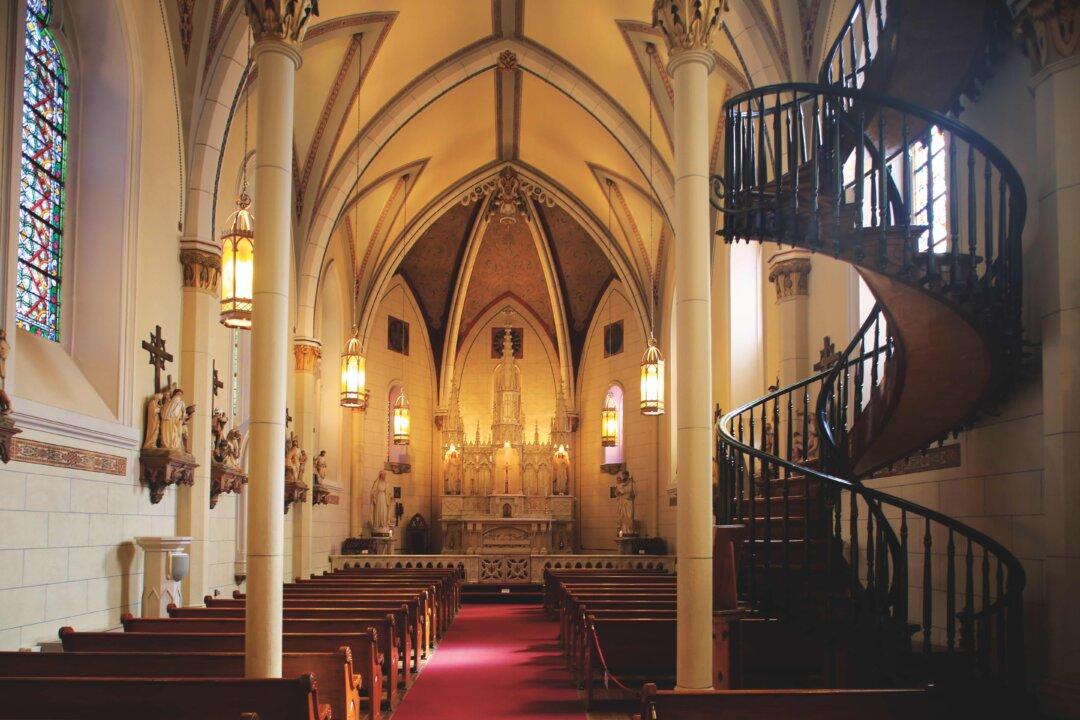The spiral staircase of the Loretto Chapel is well known as a miracle because of its unique structure. It is located in Santa Fe, New Mexico, and is a Gothic Revival style building with a mix of French spire and stained glass. It looks elegant like the Sainte-Chapelle in Paris, just smaller. The construction of the Chapel took almost six years to complete. The architect, Antoine Mouly, passed away in 1878 when the chapel was near completion, leaving the Sisters at the chapel no way to access the choir loft.
The Sisters called in the local carpenters for advice. All the carpenters agreed that given the small space inside the Chapel, a staircase would overwhelm the interior design and detract from the layout. They suggested that a ladder would be a better fit. The sisters threw away the idea as their robes were not suited for ladders. It also wasn’t decent given that the chapel was a sacred place.


